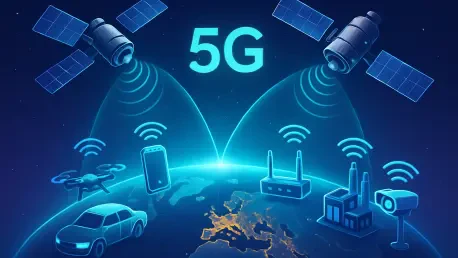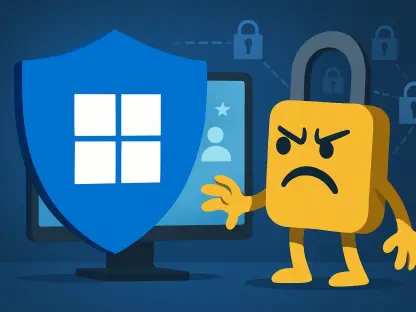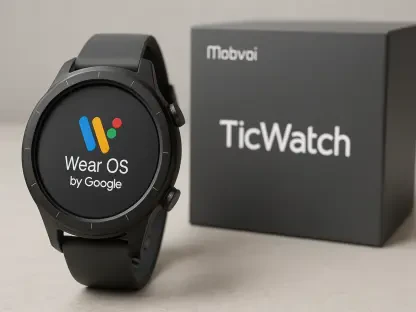What happens when the farthest reaches of the planet, untouched by traditional networks, suddenly gain access to cutting-edge connectivity, transforming lives in unimaginable ways? Picture a farmer in a remote African village tracking livestock with real-time data, or a scientist in the Arctic monitoring climate shifts without a cell tower in sight. This isn’t a distant dream but a reality taking shape through a groundbreaking partnership between Sateliot, a Barcelona-based satellite startup, and Nordic Semiconductor, a leader in low-power cellular solutions. Their recent demonstration of 5G IoT connectivity via Low Earth Orbit (LEO) satellites signals a transformative leap in bridging the digital divide.
The significance of this achievement cannot be overstated. With terrestrial cellular networks covering just 25% of Earth’s landmass, billions of people and countless industries remain cut off from the Internet of Things (IoT) revolution. This collaboration tackles that gap head-on, offering a scalable solution to connect remote regions where traditional infrastructure falls short. By leveraging LEO satellites, Sateliot and Nordic are not just innovating technology but reshaping how global connectivity is perceived, making it a cornerstone for economic and social progress in underserved areas.
Breaking Barriers in Global Connectivity
The digital divide has long been a stubborn challenge, separating urban hubs from rural expanses. Sateliot and Nordic have taken a bold step to dismantle this barrier with their pioneering 5G IoT connection through LEO satellites. This technology promises to extend the reach of IoT applications to places previously deemed unreachable, from sprawling deserts to isolated islands, ensuring that geography no longer dictates access to innovation.
This partnership’s impact stretches across multiple sectors. Industries like agriculture can now deploy sensors to monitor soil conditions in far-flung fields, while logistics firms track shipments across oceans without losing signal. The ability to connect devices in such diverse environments hints at a future where no corner of the globe is left disconnected, fundamentally altering the landscape of global communication.
Moreover, this breakthrough positions Europe as a leader in space-based connectivity solutions. By combining Sateliot’s satellite expertise with Nordic’s low-power IoT modules, the collaboration showcases a model that other regions and companies might emulate. It’s a clear signal that the race to connect the unconnected is accelerating, with profound implications for equity in technology access.
Why Satellite IoT Matters Now More Than Ever
The urgency for satellite IoT solutions stems from the stark reality of limited terrestrial coverage. Vast areas—roughly 75% of the planet’s landmass—lack reliable cellular networks, stunting progress in critical fields such as environmental monitoring and disaster response. Without connectivity, these regions miss out on data-driven insights that could save lives or boost productivity.
Satellite technology, particularly through LEO constellations, offers a viable alternative to traditional infrastructure. Unlike geostationary satellites with high latency, LEO satellites orbit closer to Earth, providing faster, more reliable connections suited for IoT and machine-to-machine (M2M) systems. This makes them ideal for real-time applications, whether it’s tracking wildlife in remote forests or managing energy grids in off-grid areas.
The growing reliance on IoT across industries amplifies the need for such solutions. As businesses and governments increasingly turn to connected devices for efficiency and innovation, leaving large swaths of the world offline is no longer an option. Satellite IoT stands as a critical tool to ensure inclusivity, enabling even the most isolated communities to participate in the digital economy.
A Milestone in 5G IoT Technology
The technical prowess of this partnership shines through in a recent demonstration of end-to-end message transmission. Using Nordic Semiconductor’s nRF9151 low-power cellular IoT module, the system connected seamlessly to Sateliot’s LEO satellites, requiring no hardware modifications. This compatibility mimics the roaming features of terrestrial mobile networks, simplifying integration for users worldwide.
Further enhancing the achievement, Sateliot integrated the IoT device with Nordic’s nRF Cloud platform. This connection facilitates robust device management and precise location services, essential for applications in remote settings. Whether it’s a mining operation in the outback or a defense mission in uncharted territory, this technology ensures consistent communication without the need for nearby infrastructure.
The broader implications are staggering. This demo validates the feasibility of satellite-based 5G Narrowband IoT (NB-IoT), paving the way for scalable deployments across diverse sectors. It also cements Sateliot’s vision of acting as a “cell tower in space,” extending terrestrial 5G networks at a fraction of the cost of traditional satellite systems, thus making connectivity more accessible than ever.
Voices of Innovation and Vision
Leadership from both companies has expressed immense pride in this milestone. Jaume Sanpera, CEO of Sateliot, compared the impact of this achievement to Starlink’s first mobile phone connection, underscoring its role in democratizing global access to technology. His perspective highlights the potential to level the playing field for regions long excluded from digital advancements.
Oyvind Birkenes, executive VP at Nordic Semiconductor, echoed this enthusiasm, pointing to the opportunity to “accelerate deployments across various industries.” He emphasized how combining low-power devices with satellite access could transform operations in challenging environments. Such optimism from industry leaders reflects a shared belief in the game-changing nature of this technology.
Market confidence further validates their vision. Sateliot has secured €270 million in contracts from 400 clients spanning 50 countries, demonstrating strong demand for satellite IoT services. A recent €70 million Series B funding round, including a €10 million investment from Madrid-based Hyperion Fund, signals robust financial backing, ensuring the company’s ambitious plans continue to gain momentum.
Harnessing Satellite IoT for Practical Impact
For organizations eager to adopt this technology, the collaboration offers actionable strategies to maximize its benefits. Targeting IoT applications in areas devoid of cellular coverage, such as rural environmental sensors or maritime asset tracking, can unlock new operational efficiencies. This focus ensures that the most disconnected regions gain immediate value from satellite connectivity.
Adopting low-power solutions like Nordic’s IoT modules is another key step. These energy-efficient devices support long-term use in off-grid locations, minimizing maintenance costs and logistical challenges. Such practicality makes the technology appealing for industries operating in harsh or isolated conditions, from energy exploration to wildlife conservation.
Finally, partnering with satellite operators like Sateliot provides access to affordable NB-IoT services, sidestepping the prohibitive costs of older satellite systems. Monitoring the expansion of Sateliot’s LEO constellation, with six satellites currently operational and more planned from 2025 onward, allows businesses to integrate services as coverage scales. These steps form a clear roadmap for leveraging satellite IoT in transformative ways.
Looking back, the collaboration between Sateliot and Nordic Semiconductor marked a defining moment in the quest for global connectivity. Their successful demonstration of 5G IoT via LEO satellites addressed a critical gap in terrestrial coverage, opening doors for industries and communities once left behind. As this technology continues to evolve, stakeholders must prioritize partnerships and investments to expand satellite constellations and refine low-power solutions. Keeping an eye on emerging use cases and advocating for policies that support space-based connectivity will be crucial. This pioneering effort laid the groundwork for a more connected world, and sustained action can ensure that promise becomes a lasting reality.









